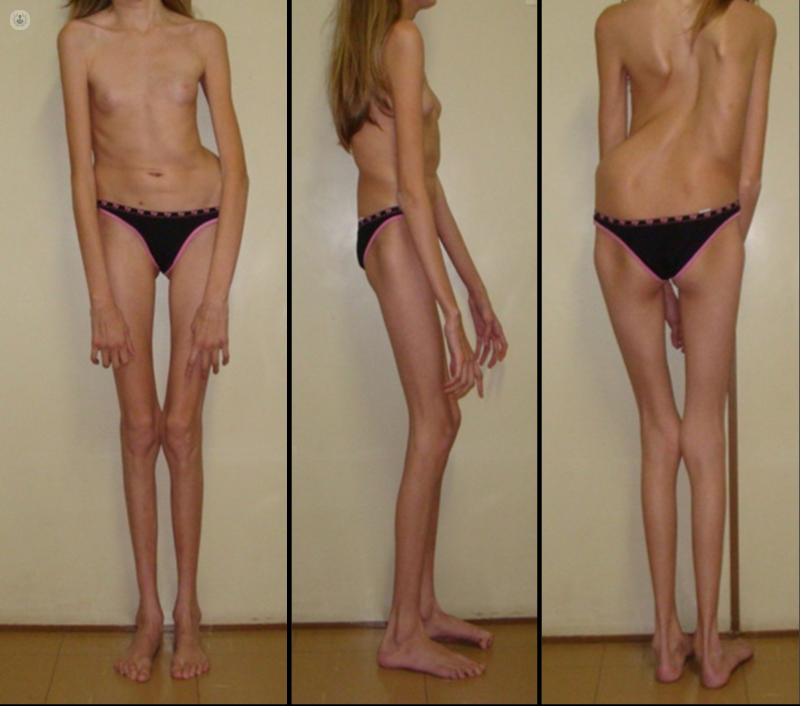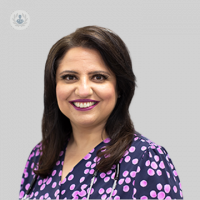Marfan syndrome
Dr Nitha Naqvi - Paediatric cardiology
Created on: 11-13-2012
Updated on: 09-19-2023
Edited by: Sophie Kennedy
What is Marfan syndrome?
Marfan syndrome is a disorder which causes a disruption in the growth of connective tissue, a group of tissues which strengthen the body structures and support internal organs. It mainly affects the skeletal system, eyes, skin and the cardiovascular system. It can also affect the lungs and the heart where it can cause stretching or weakening of the aorta, which is known as aneurysm or aortic dilation.

What are the symptoms?
Typical characteristics of those with Marfan syndrome include being tall, with abnormally long legs, arms, fingers, and toes. Heart defects and lens dislocation are also typical in those with Marfan syndrome. Marfan syndrome can also cause the spine to become abnormally curved, i.e scoliosis.
Other spinal problems can occur in those with the syndrome, including spondylolisthesis (one of the vertebra slipping over another) and dural ectasia (the membrane lining your spinal cord and brain weakening and expanding).
Other symptoms include:
- Arched palate and crowded teeth
- Flat feet
- Sunken or prominent sternum
- Learning difficulties
- Movement of the lens of the eye from its normal position (dislocation)
- Chronic pain in muscles and joints
Causes of Marfan syndrome
In most cases, Marfan syndrome is hereditary and is transmitted from parents to children. It is caused by defects in a gene called fibrillin-1, which is a fundamental gene for connective tissue in the body. However, up to 30 per cent of patients do not have a family history.
Can it be prevented?
Gene mutations that cause Marfan syndrome cannot be prevented.
What is the treatment?
There is no cure for Marfan syndrome at this time, but the associated problems it causes can be managed, such as visual problems and scoliosis. Medication can decrease the heart rate to help prevent stress in the aorta (the main artery in the body). Some people may need surgery to replace the valve and the aortic root.





